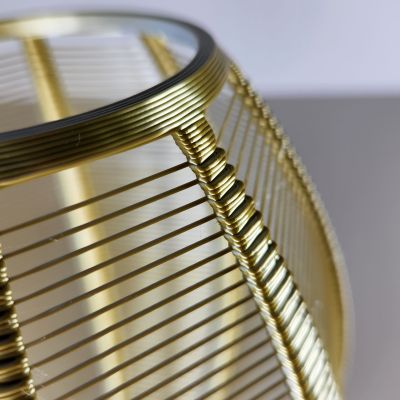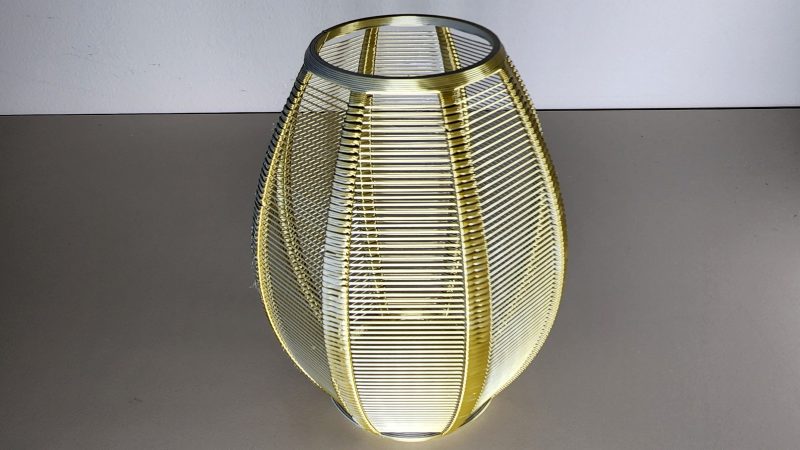
Overhangs are the bane of the melty-plastic 3D printing world. Often, we try to avoid them with creative print alignments, or we compensate with supports. However, [3DPrintBunny] decided to embrace overhangs in the extreme in the design of her creative 3D-printed string vase.
The design is intended to be printed with a larger nozzle, on the order of 0.8 mm or so, at a layer height of 0.6 mm. Under these conditions, the printer nozzle bridges the gap between the vase’s pillars with a single string of molten filament. With the settings just so, the molten filament stays attached during the bridging operation, and creates a fine plastic string between the pillars. Repeat this across the whole design, and you get an attractive string vase.
Amazingly, [3DPrintBunny] didn’t have to do any fancy slicer tricks to achieve this. Stock slicer settings got the job done just fine, and she reports that the model should print on most FDM printers. For her own examples, she printed in a special silver/bronze dual color PLA filament.
It recalls us of efforts to create synthetic hair-like fibers by taking advantage of stringing in 3D printers. Video after the break.
I really like thick strings, so I decided to design a string vase for my 0.8mm nozzle, printed at 0.6mm.
Print in action here, photos in the comments😊
stl: https://t.co/k1DO5IEsnU pic.twitter.com/wujzbOBExA
— 3DPrintBunny (@3DPrintBunny) September 11, 2022
















Impressive.
She’s got the temps and extrusion ratio/amount _dialed in_. That is stellar.
And the design is beautiful too.
Fat nozzles, represent!
Yep, that is amazing.
That was actually the word that I said out loud when the nozzle started the second bridge. When you gain an understanding of a certain process (in this case 3D printing) it opens up new avenues of understanding, and in turn, appreciation.
Looks a lot like a model I printed last year, https://www.thingiverse.com/thing:5145578
Not at all lol
Nicely done. Most of us would have a hard time printing this, and in general a model with all those long straight extrusions will try to pull itself apart during printing, even with solid walls (which is why it’s often surprisingly hard to print simple boxes)
How do you even model such designs?
Using string theory.
Good one! I laughed out loud at this one.
Probably by directly designing in gcode, for instance with FullControl: https://fullcontrolgcode.com/
Just design a box of layer height x extrusion width x any length you want and the slicer will do the rest.
.
After multiple validation failures when trying to post a comment here, a single period gets accepted .
Should read “embrace bridging in the extreme,” not “embrace overhangs in the extreme.”